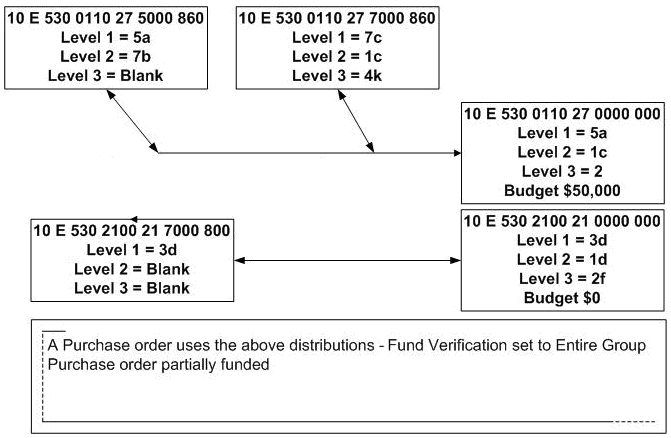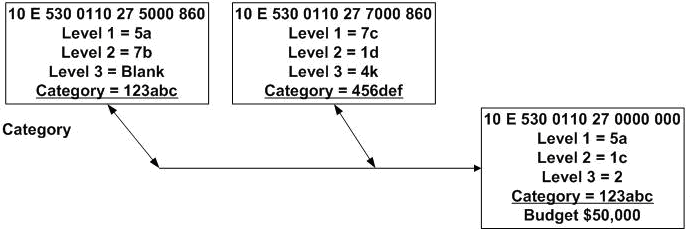







|
|
|
|
|
|
|
Contents |
Menu Path: System Admin / PaC Finance / Config / Purchase Orders
Use Purchase Order Groups is set to establish whether or not a district will use Purchase Order Groups.
Information on changing using and not using PO Groups will be covered in another document. Using Purchase Order Groups is optional.
Purchase Order Groups allow a district to assign different series of Purchase Orders to specific groups (that is, each school can have different series of Purchase Order numbers) or to establish one series of Purchase Orders numbers for the whole district.
Checked – PO Groups are used. You must create the PO Groups to be used. See WESPaC Financial Management Purchase Order Groups Setup User’s Guide.
Un-checked – PO Groups are not be used.
Menu Path: System Admin / PaC Finance / Config / Purchase Orders
Vendor Catalogs may be uploaded into the system and used when creating purchase orders. They may also be manually created. For more information on using and creating Purchase Order Catalogs, see Vendor Catalogs Tab 8 in the WESPaC Financial Management - Vendor Master Information User’s Guide.
Checked – Purchase Order Catalogs may be used on requisitions and purchase orders. A Catalog EEL displays on the Requisition and Purchase Order Detail Line Information screens.
Un-checked – Purchase Order Catalogs may not be used on requisitions and purchase orders.
Pre-load Batch Number with Day of Month
Menu Path: System Admin / PaC Finance / Config / Purchase Orders
A Batch Number is required when entering requisitions and purchase orders. This setting establishes whether batch numbers will have the current day of the month preloaded when adding a requisition or purchase order. For example, current date is September 12th, the pre-loaded batch number will be "12".
Checked – the system automatically inserts the current day of the month in the Batch Number field. The Batch options in the Data Retention on Add screen are inaccessible to a user, but users still have the ability to change the batch number.
Un-checked – the system leaves the Batch Number field blank or allows a default setting to come from the user’s Data Retention on Add settings. See WESPaC Financial Management Requisition and Purchase Order Miscellaneous Functions (Tabs, Ranges, Options, Notes, Category) for more information on the Data Retention on Add function.
Allow Current Year Requisition/PO Entry
Menu Path: System Admin / PaC Finance / Config / Purchase Orders
Allow Current Year Requisition/PO Entry determines if users entering new requisitions and/or purchase orders are only allowed to enter orders in the current fiscal year and/or the next fiscal year.
Checked – Allows entry of requisitions/purchase orders in the current year and next (This should be the normal processing mode).
Un-checked – Prevents entry of requisitions/purchase orders into the current fiscal year. For example, this could be used if a district is out of money and nobody can spend in the current year.
Menu Path: System Admin / PaC Finance / Config / Purchase Orders
The Verify Funds section offers the ability to run budget capacity checks on requisitions, purchase orders and when used, Inventory requests for stock, as they are entered.
By selecting from the following options, you can determine if funds will be verified, and if verifying, what message and action the system allows when funds are not available.
Only one option may be selected:
Do Not Verify Funds – Requisitions, purchase orders and Inventory requests can be entered whether or not money is budgeted to the account(s) entered.
Verify With Warning Message – As you enter requisitions, purchase orders and Inventory requests, the system checks to make sure there are budget dollars available in the account(s) entered. If there are no funds available, a warning message displays. You have the option to continue or select a different account.
Stop If Funds Not Available – As you enter requisitions, purchase orders and Inventory requests, the system checks to make sure there are budget dollars available in the account(s) entered. If there are no funds available, an error message displays. You cannot continue with the current account(s) selected. The system will prompt you to select another account.
Menu Path: System Admin / PaC Finance / Config / Purchase Orders
This section is available only when verifying funds is set to Verify with warning message or Stop if funds not available. By selecting from the following options you can determine where funds will be verified. Although not displayed here, the same verification established here is also used on Inventory requests.
Only one option may be used:
Requisitions Only – the budget capacity check runs only when entering requisitions.
Requisitions and Purchase Orders – the budget capacity check runs when entering requisitions and purchase orders.
Menu Path: System Admin / PaC Finance / Config / Purchase Orders
Accounts can be assigned to a group, a level within that group, and/or a category. Budgets can also be built based on the group, level, or category. See Chart of Accounts and Budgeting.
Account Fund Verification is available only if verifying funds. It determines whether fund availability will be verified based on the Individual Account or on the Account Group to which the account is assigned.
Only one option may be used:
Individual Account – budget capacity is based on the individual account(s) entered. Budget must be entered at the individual account number level.
If this option is selected, the Account Group Level options are not available.
Account Group – budget capacity is based on the Account Group to which the account number is assigned. Budget must be entered at an Account Group Level.
If this option is selected, the Account Group Level options become active.
Menu Path: System Admin / PaC Finance / Config / Purchase Orders
If the Account Group option in the Account Fund Verification frame has been selected, then the option chosen in this section is used to verify budget dollars for the requisition and purchase order budget capacity check.
If the Account Group option of the Account Fund Verification section has not been selected, this option is not available.
Only one of the options may be used:
Entire Group – All Group Levels associated with the account(s) entered are used to run the budget capacity check. Your budget must have been built using Level 1, Level 2, and/or Level 3.

Level 1 – the Level 1 Account Group associated with the account(s) entered is used to run the budget capacity check. Your budget must have been built at this level. No other levels are considered.

Level 2 – the Level 2 Account Group associated with the account(s) entered is used to run the budget capacity check. Your budget must have been built at this level. No other levels are considered.

Level 3 – the Level 3 Account Group associated with the account(s) entered is used to run the budget capacity check. Your budget must have been built at this level. No other levels are considered.

Category – the Account Category associated with the account(s) entered is used to run the budget capacity check. Your budget must have been built at this level. Only the Category value is considered.

Menu Path: System Admin / PaC Finance / Config / Purchase Orders
When requisitions and purchase orders are entered, the items entered may be taxable.
Tax Rate is the district’s default tax rate. It populates the Tax field on requisitions and purchase orders. It can be changed at the time the requisitions or purchase order is entered.
Tax Rate – Enter the default rate to be used on all new requisitions and purchase orders. Decimal is required.
Menu Path: System Admin / PaC Finance / Config / Purchase Orders
When requisitions and purchase orders are entered, a district may require that an extra amount be encumbered for any unforeseen charges that may be associated with the items ordered (e.g. freight, service charges, etc).
Other Charges determines the district’s default additional charge value. It populates the Other Charges field on requisitions and purchase orders. It can be changed at the time the requisitions or purchase order is entered.
Other Charges may be:
By Percent – Enter the default percentage rate to be applied to the requisition or purchase order. This rate is applied against the subtotal of the order.
By Amount – Enter the default amount to be applied to the requisition or purchase order. This amount will be added to the subtotal of the order.
Version 01.06.00.0 – 010225 PL 11/05/03